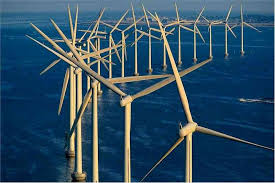Coaxing energy from the sun and wind—not to mention from rotting garbage, corn, switchgrass and algae—has long been the dream of lab technicians, garage-tinkers and environmental dream weavers.
But as long as oil was plentiful and cheap (even after a few painful periods when it was anything but), America’s automakers, energy companies and politicians were content to give alternative energy technologies little more than a verbal pat on the head during political campaigns.
In the past year, however, a draining war in Iraq, coupled with a staggering leap in gasoline and home heating oil prices triggered when China’s economy caught fire, appeared to finally turn the tide toward alternative fuels, renewable energy sources and conservation.
 Americans expressed their displeasure by parking their Hummers, lining up for hybrids and voting for candidates who understood the fatuity of a national energy policy that relied on the cooperation of Middle East governments and extended military tours of duty.
Americans expressed their displeasure by parking their Hummers, lining up for hybrids and voting for candidates who understood the fatuity of a national energy policy that relied on the cooperation of Middle East governments and extended military tours of duty.
In California and the northeast, politicians, sniffing the scent of a fundamental shift in electoral thinking, have been pressing for larger investments in alternative energy research and subsidies for nascent wind and solar companies. They’re also demanding that utilities produce more electricity from sources other than oil and coal and have begun wooing companies from EU nations that are ahead of America in alternative energy development.
Pennsylvania Governor Ed Rendell has been a pioneer in promoting the development of alternative and renewable energy.
He provided state grants and other inducements to convince Gamesa, a Spanish leader in wind-turbine construction, to set up manufacturing operations in the state. His policy of grants and tax breaks also apply to forward-looking U.S. companies and local entrepreneurs who seek to deliver products and services that can help move Pennsylvania away from a dependence on foreign oil while generating new jobs and local tax revenues.
For several years, New Jersey has been second only to California in underwriting solar panel installations on the rooftops of businesses and homes. When the national economy began to falter, Gov. Jon Corzine goosed the state’s Energy Master Plan into a document that endorsed (and provided starter funds for) an ambitious blueprint for up to 96 electricity-generating wind turbines off the state’s coast.
As summer wound down, gasoline prices began dropping, eroding public awareness of the need to conserve energy. Then, in the fall, came the seismic waves of mortgage/investment/credit rumbles that shook the American economy to its core, ended John McCain’s presidential hopes, and flattened hundreds of thousands of Americans’ retirement plans and a growing number of jobs, too.



